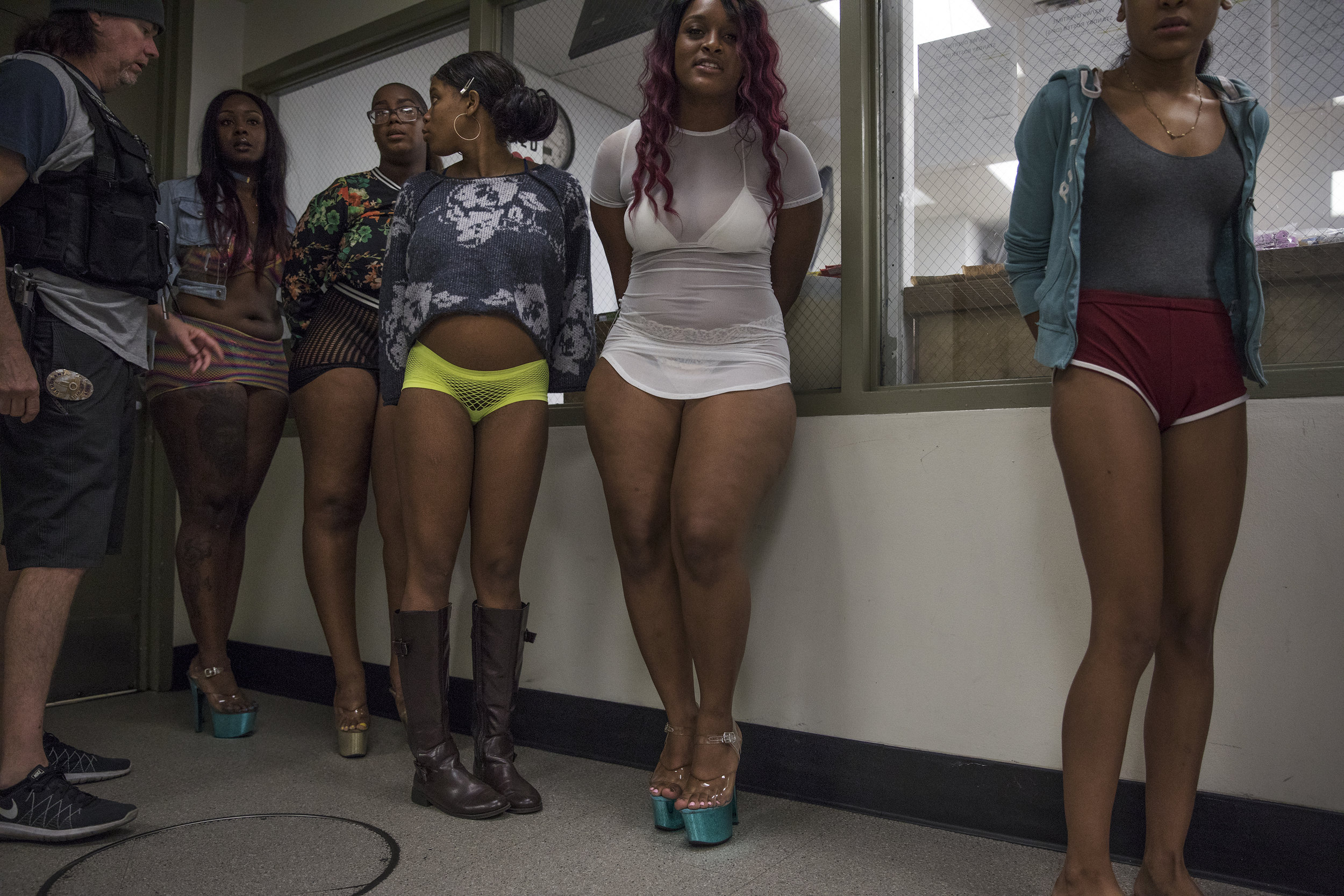Vice in Los Angeles
For four days in May of 2017 I shadowed the Los Angeles Police Department’s South Bureau Vice Squad to document sex trafficking in south L.A. for Time magazine. The Bloods and the Crips have historically controlled illicit operations in the neighborhoods around south Los Angeles. The commercial sex trade is an illegal yet open business centered along Figueroa Street. Gang members act as pimps and take advantage of young women and girls, often from foster care homes or abusive families, and force them into prostitution. The pimps control rackets by strategically placing their “stable” of 3 to 5 coerced sex workers on various street corners day and night while younger gang members keep watch for police on the streets. The women are required to work until they have earned $500 for their pimps each day.
During one sting operation set up by the vice squad at 5:30am, the plain-clothes officers hit their full capacity in less than an hour, arresting 13 women on the charge of soliciting sex. What followed is a familiar cycle for many victims of sex trafficking: arrest, booking, most likely a misdemeanor charge, and a day or two in jail until their pimp bails them out to get them back on the street.
The demographics of prostitution arrests in Los Angeles demonstrate that a disproportionate number of women of color, particularly Black and Latinx, face arrests and charges for the solicitation of sex, though they are likely victims of forced prostitution. While Black women make up around 9% of the female population of Los Angeles, they account for nearly 65% of the LAPD’s female prostitution arrests. Both systems- the gangs and the police- render Black and Latinx women the most vulnerable to this cycle. As these women become further entangled in “the life”, they are more susceptible to drug and alcohol abuse and domestic violence, which complicates efforts to leave or seek help.
















